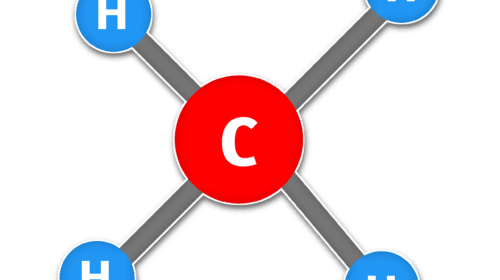After earning a BS in electrical engineering from the Indian Institute of Technology Bombay, Ashish Deshpande seized an exciting opportunity to join Schlumberger (SLB) straight out of college and take advantage of international assignments. The thrill of working in the rugged outdoors across the globe captured his interest, and he would find himself in locations like Latin America, the Caribbean, India and the Middle East. After a nine-year tour with SLB, he went to New York University to earn his MBA in Finance. After closing the door to SLB, it would again open in his favor.
Deshpande later found himself assigned to manage a newly formed IT business architecture group in France. He describes the assignment as a “good fit,” and it became the focal point of a career with SLB spanning more than three decades. After retiring, Deshpande established Deshpande Systems, an international consulting firm that implements business systems that optimize oil and gas operations.
Nick Vaccaro: How do effective business solutions that rely on complex information technologies benefit the oil and gas industry?
Ashish Deshpande: The industry benefits in several important ways:
- Improved operational efficiency: IT-enabled solutions can automate tasks, streamline processes, and optimize decision-making, leading to significant efficiency gains for oil and gas companies. For example, IoT and predictive analytics solutions can identify potential equipment failures and schedule maintenance to avoid costly downtime. Advanced data analytics and AI-driven systems can optimize exploration, production, and distribution processes.
- Reduced costs: By facilitating greater efficiencies and less waste, complex IT solutions can help oil and gas companies decrease overall costs. For example, supply chain management solutions can be used to optimize inventory levels and minimize transportation expenses.
- Enhanced safety and security: IT solutions can provide real-time operations monitoring, identify potential risks, and implement mitigation measures. For example, environmental monitoring solutions that can detect leaks and spills early on can minimize environmental damage that can significantly impact oil and gas companies’ project schedules and budgets.
- Increased revenue: Better efficiency, less expense, and improved safety and security can generate higher productivity and, thus, higher revenue. Additionally, companies can develop new digital products and services and even expand into new markets.
- Improved business continuity and compliance: Increasing dependence on IT solutions and the growing value of companies’ data has been accompanied by a rise in the frequency of sophisticated cyberattacks. Suitably advanced cybersecurity measures can counter these attacks to protect against data theft and downtime, strengthening business continuity and compliance.
NV: Oil and gas companies incorporate multiple levels of structure, like procurement, supply chain, research and development, among others, to partner and drive success. How do IT business solutions apply to each other, and does this allow for a more enhanced integration of the multiple areas of business?
AD: Companies regularly adapt their organizational structures to ensure that their operational, functional, and research and engineering (R&E) units can deliver effectively on their separate mandates, and each of these groups must have a high degree of influence over the choice and definition of the specialized IT solutions that they require.
Field service IT solutions can make job scheduling and resource allocation more efficient; e-commerce can help digitize procurement and invoicing; ERP/MRP systems support functions such as HR and accounting and help orchestrate manufacturing. R&E is supported at every stage by sophisticated IT tools for measurement, data collection and analysis, design and development, modeling and simulation. These help to constantly improve existing products and accelerate the growth of new ones while reducing the risk of failure.
At the same time, the underlying data architecture across all these IT solutions needs central oversight to facilitate the fast and comprehensive sharing of relevant information required for any collaborative tasks or workflows and properly inform decision making at every level.
NV: Moving to a software and technology based system of digitized strategy must depend upon different external factors. What challenges do you incur when trying to persuade companies to transition?
AD: This type of transition is always challenging. The numerous challenges may include:
- Cost: Particularly for smaller organizations in mature segments, the upfront costs of designing solutions, software, hardware and training can be a barrier.
- Complexity: The current state of a company’s infrastructure is the product of many years of evolution, with multiple planned and ad hoc changes stacked up over time. It can be very confusing and time consuming to unravel and understand how everything works together, so working out what to address and in what sequence becomes critical. This is not easy to do.
- Lack of expertise: Companies will usually need the complete spectrum of skills required to digitize their operations among their in-house staff. Planning the work and making sound technology choices are critical tasks and often depend upon bringing in consultants or outsourcing large parts of the work to third-party providers. Coordinating everyone and keeping the digitization project moving forward is a complex project management task requiring special skills and experience.
- Resistance to change: The current workforce might be apprehensive about adopting new technology and new ways of working, and nervous about their situation in the future state. Getting buy-in through regular communication, support and training is critical at all levels.
- Potential for new risks: Cybersecurity immediately becomes critical in a digitized enterprise and cannot be deferred. Depending on the data being collected and stored, policies and safeguards will be required to protect it from unauthorized access and possible misuse.
These challenges can be daunting and are not to be underestimated. However, once the decision to digitize has been made, the key is to see it as a continuous journey rather than a one-time project and start thinking about the desired future state and the initial sequence of steps needed to move in that direction.
NV: When upgrading to IT-based strategies, what considerations are given to the current workforce? Does this involve a decrease in jobs and personnel? For those who remain, is training available to help facilitate the transition, or does it require an entirely new workforce of professionals to operate within the parameters of the new system?
AD: The first step is to conduct an excellent analysis of the skills and competencies of the current workforce. After that, as the future digitized state gets defined, the skills in that scenario need to be defined, and a gap analysis conducted to determine how the future workforce will be staffed, which positions will be taken by current employees with suitable training, and which positions will require hiring new staff. Job roles and responsibilities likely must be redesigned to align with the new IT-enabled processes and systems appropriately. Good communication is critical throughout the process so that disruption is minimized. Job loss occurs only in those few cases where it is definitively determined that a particular specialty will require less staff than before, and reassignment or retraining is not feasible.
Institutional and industry knowledge acquired over the years must be adequately understood, valued and retained because any such loss is often not immediately apparent. It can be very damaging in the long term. Organizations with employees who have a degree of diversity in terms of skills, aptitudes and interests will have an advantage when it comes to retraining, as digital technologies are evolving so rapidly now that it’s difficult to foresee whether a particular worker profile is uniquely best suited for all scenarios in the future when some current roles might be impacted. Still, new types of job opportunities will also be created.
NV: Today’s oil and gas industry relies heavily on efficiency and reduction of nonproductive time (NPT) to drive increases in profitability. How do IT business strategies support this strategy?
AD: IT solutions can very effectively reduce NPT and improve profitability in these and other areas:
- Data analytics and machine learning: IT can help oil and gas companies collect and analyze large amounts of data from their operations to identify patterns and trends. This information can then be used to make more informed decisions about improving efficiency and reducing downtime. For example, machine learning can predict when equipment will likely fail, allowing preventive maintenance to be scheduled before a breakdown occurs. Analytics can help use assets and resources more effectively by identifying inefficiencies in the supply chain and production processes, which can then be addressed.
- Automation and robotics: IT can also automate tasks and processes currently performed manually, freeing employees to focus on more complex tasks and reduce human error. For example, electronic invoices can be paid automatically, or drones can be used for aerial inspection of facilities.
- Digital twins: Virtual representations of physical assets, such as oil wells and pipelines, can simulate different operating conditions and test new technologies before they are implemented in the real world. These digital twins can help avoid costly mistakes and downtime.
- Cloud computing: Oil and gas companies can access scalable and affordable IT resources through cloud computing, enabling them to reduce upfront costs and avoid having to maintain their IT infrastructure.
- Collaboration and communication: IT systems allow employees to collaborate and communicate more effectively within the company and with external partners. This can improve coordination and efficiency across the supply chain.
NV: Are there any measurable downfalls or shortages in implementing IT business strategies? How can these systems be improved to improve oil and gas operations further?
AD: IT solutions often do not deliver the anticipated positive impact; some estimates cite a failure rate as high as 70 percent. Reasons for this disappointing statistic include the following:
- IT solutions can be expensive, and it is natural to want to keep costs down. Sometimes, cutting corners leads to inadequate and ineffective solutions.
- Poor, or less than enthusiastic, adoption is a common problem, especially in workflows where it is possible not to use the system and still get the primary job done. Poor usability can be a cause of this problem.
- Poor integration of systems is a huge problem, as this can result in employees spending increasing amounts of time keying in data (often multiple times) into various designs without any business advantage, leaving them even less time to do the part of their jobs that is creating value for the organization.
- Poor use of data collected is another problem. Acquiring, storing, processing and securing data is expensive, so the return on investment will fail to meet expectations unless good use is made of the obtained data, in terms of automation, collaboration or actionable insights.
Improving IT systems has to start with a clear vision of what they are supposed to achieve. The best strategy is to take a top-down approach to describe the enterprise architecture, comprising the organization’s objectives, people and skillsets, processes, IT applications and data. Once that is accomplished, the desired future state can be laid out, and then each of the problems noted above can be tackled to take the organization closer to the future state. A company should quickly retire older systems that are not creating value and would need significant remedial work.
NV: Where do you see the future of IT-based business strategies? What improvements do you foresee being made in the next 10 years that will improve upon the current platforms? What problems do you expect this methodology to solve in the future that it currently does not?
AD: The role of IT-based business strategies will continue to grow in the oil and gas industry across the value chain, from exploration and production to pipelines, refining and marketing. In the next 10 years, I believe we will see significant improvements in the following areas:
- Generative AI: Artificial Intelligence (AI) and Machine Learning are reasonably well understood and already used in the oil and gas industry. What is very promising is the advent of Generative AI; this is a dramatic development, with the technology improving at such a rapid pace that all previous IT solutions and approaches to work will need to be rethought.
- Digital Twins: We expect to see digital twins become much more sophisticated and widely used throughout the industry.
- The Internet of Things (IoT): The IoT is a network of physical sensors and objects connected to the internet and can collect and exchange data. In the oil and gas industry, the IoT is used to monitor and control assets, collect sensor data, and improve operational efficiency. We can expect the IoT to become more widespread and used to collect even more data from the oil and gas fields and various installations.
- Robotics: Robots are steadily becoming more sophisticated and capable of more delicate and dexterous movements. Combined with the advancements in computer vision and AI, we expect robots to start to do specialized activities in niche situations increasingly.
- 5G and Edge Computing: Together, these two technologies can be expected to be more ubiquitous. They will be an integral part of field installations that will generate much data needing to be moved around, processed and acted upon practically instantaneously.
Improvements in these technologies will help address several challenging issues, starting with safety and sustainability. Oilfield field personnel, especially upstream, are exposed to 10 times the risk of injury compared to the typical non-oilfield worker. Robots, AI and IoT will reduce the need for field personnel, particularly for the more hazardous tasks. This will not just be an option. Instead, I expect it to be necessary, as it becomes harder to find highly qualified workers, who will do these increasingly technical jobs, and stay in them when many other lucrative alternatives are also available.
Sustainability is imperative, and its importance will only grow. Technologies, including AI, IoT and digital twins, will help companies monitor and reduce their environmental footprint in a much more precise way than is possible today.
Lastly, the most daring and imaginative oil and gas companies may combine their deep understanding of risk management and operating a very technical frontier business with these latest technologies, where no one has a unique advantage, to develop entirely new businesses on a new frontier, such as space.
Nick Vaccaro is a freelance writer and photographer. In addition to providing technical writing services, he is an HSE consultant in the oil and gas industry with twelve years of experience. Vaccaro also contributes to SHALE Oil and Gas Business Magazine, American Oil and Gas Investor, Oil and Gas Investor, Energies Magazine and Louisiana Sportsman Magazine. He has a BA in photojournalism from Loyola University and resides in the New Orleans area. Vaccaro can be reached at 985-966-0957 or nav@vaccarogroupllc.com.
Oil and gas operations are commonly found in remote locations far from company headquarters. Now, it's possible to monitor pump operations, collate and analyze seismic data, and track employees around the world from almost anywhere. Whether employees are in the office or in the field, the internet and related applications enable a greater multidirectional flow of information – and control – than ever before.












